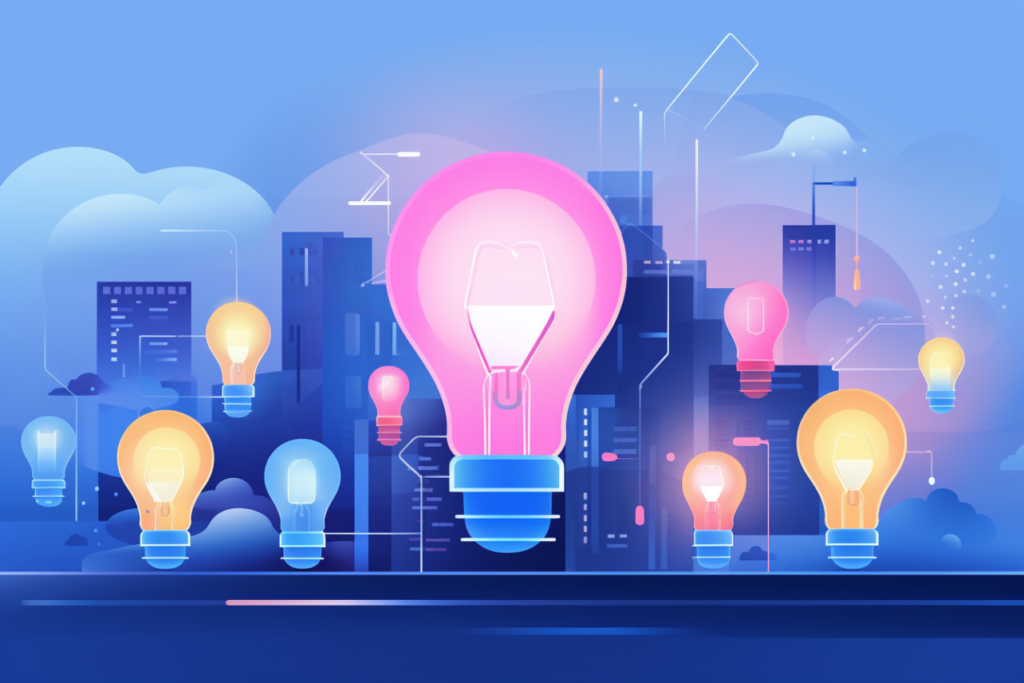The world of lighting has evolved significantly over the years, and one fundamental aspect of this evolution lies within the various types of light bulbs available in the market today. From the traditional incandescent bulbs to LED and CFL bulbs, each type possesses distinct characteristics and brings its advantages.
Understanding these types of light bulbs will not only enable you to make more informed decisions for your lighting needs but also enhance your overall lighting experience. We will dive deeper into the seven best light bulbs for your home. With so many types of lightbulbs available on the market, it can be overwhelming to decide which one is right for you. This blog post breaks down seven popular types of lightbulbs to help you make an informed decision for your home lighting needs.
Incandescent Bulbs
First and foremost, let’s delve into the classic yet soon-to-be phased-out incandescent bulbs. These bulbs have a filament made of tungsten that emits light when an electric current passes through it. While incandescent bulbs have been the preferred choice for many years due to their warm glow and easy dimming capabilities, they are known for their inefficiency in converting electricity into visible light. In fact, a significant portion of the energy consumed by incandescent bulbs is wasted as heat, making them energy guzzlers and leading to higher electricity bills.
Pros:
- Warm Glow: Incandescent bulbs produce a warm, inviting light.
- Affordable: These bulbs are generally inexpensive upfront.
Cons:
- Short Lifespan: Typically lasts only about 1,000 hours.
- Energy Inefficient: They convert only a tiny amount of electricity into light, using most of it as heat.
Compact Fluorescent Lights (CFLs)
To combat the shortcomings of incandescent bulbs, Compact Fluorescent Lamps (CFLs) entered the lighting scene. CFL bulbs work by sending an electric current down a tube that contains argon and mercury vapor. This process causes the release of ultraviolet light, which then transforms into visible light when it strikes the phosphor coating inside the bulb. CFL bulbs have revolutionized energy efficiency by using significantly less energy than incandescent bulbs.
They also have a longer lifespan, reducing the frequency of bulb replacements. However, it’s worth noting that CFL bulbs still do contain mercury, which can be harmful if the bulb breaks, necessitating proper disposal methods.
Pros:
- Energy-Efficient: Uses about 70% less energy than incandescent bulbs.
- Long-Lasting: Lasts up to 10 times longer than incandescents.
Cons:
- Contains Mercury: Disposal can be more complicated.
- Slower to Illuminate: Takes time to reach full brightness.
LED Bulbs
Now let’s turn our attention to the game-changer in the lighting world: Light-emitting Diode (LED) bulbs. LED bulbs work through the flow of electric current within a semiconductor material, which emits light due to electroluminescence. In simpler terms, LED bulbs convert the movement of electrons through a semiconductor into visible light.
These bulbs have emerged as the epitome of energy efficiency, outperforming both incandescent and CFL bulbs by consuming significantly less power. They also have a remarkably longer lifespan, capable of lasting up to 25 times longer than incandescent bulbs and outliving CFLs as well. Additionally, LED bulbs are highly durable, as they are not made of fragile materials like filaments or glass.
Besides their unmatched energy efficiency and long lifespan, LED bulbs offer another remarkable advantage: their versatility. LED technology has paved the way for various innovations in lighting design. LED bulbs can come in a range of colors, from warm white to cool white, offering individuals the flexibility to create different atmospheres or complement their interior decor. Furthermore, with advancements in LED technology, it is now possible to find dimmable LED bulbs, which can be adjusted to your preferred brightness level.
Pros:
- Very Energy-Efficient: Uses up to 90% less energy than incandescent.
- Long Lifespan: Can last up to 25,000 hours or more.
Cons:
- Cost: More expensive upfront, though costs are decreasing.
- Variable Quality: Wide range of quality among manufacturers.
Halogen Bulbs

Halogen bulbs are another type of incandescent bulb that provides bright, white light and is more energy-efficient than traditional incandescent bulbs. They are often used in various applications like automotive headlights, under-cabinet lighting, and spotlights. Below are some details about halogen bulbs:
Halogen bulbs contain a tungsten filament and a small amount of halogen gas, typically iodine or bromine. When the bulb is turned on, the tungsten filament heats up and emits light. The halogen gas reacts with the tungsten vapor, preventing it from depositing onto the bulb wall, which increases the lifespan of the bulb.
Due to the heat they produce, it’s crucial to handle halogen bulbs carefully. Always ensure they are kept away from flammable materials and that fixtures are securely installed.
Pros:
- Bright Light: Offers crisp, white light.
- Dimmable: Compatible with most dimmer switches.
Cons:
- Hot: Produces more heat compared to other types.
- Shorter Lifespan: Lasts about 2,000 to 4,000 hours.
Daylight Bulbs
Daylight bulbs are designed to mimic the natural light of the sun and are often used in various settings like homes, offices, and studios. These bulbs offer a color temperature ranging from about 5000K to 6500K, producing a cool, vibrant light that is usually described as “white” or “blueish.”
Daylight bulbs can be made using various technologies, including LED, CFL, and even some types of halogen and incandescent bulbs. The higher color temperature ensures that the light produced is closer to the color of natural daylight.
Pros:
- Mimic Natural Light: Ideal for reading or intricate tasks.
- Color Accuracy: Excellent for tasks that require color precision.
Cons:
- Not for Relaxation: The bright light can be harsh for relaxation.
- Limited Applications: Best suited for specific tasks rather than general lighting.
Vintage or Edison Bulbs
Edison bulbs, also known as vintage or filament bulbs, are a type of incandescent light bulb designed to replicate the look of the original light bulbs invented by Thomas Edison. They feature a distinctive, exposed filament that glows when electricity passes through it, producing a warm, amber light. Over the years, they’ve gained popularity for their nostalgic, antique appearance and are often used in decorative fixtures to create a cozy, retro ambiance.
Edison bulbs operate on the same basic principle as traditional incandescent bulbs, where an electric current heats a tungsten filament until it glows and produces light. The difference lies mainly in the design of the filament, which is often looped or spiraled in Edison bulbs to create a visually appealing effect.
While Edison bulbs may not be the most energy-efficient or practical option for every setting, they offer a unique, vintage aesthetic that can add character and warmth to a space.
Pros:
- Aesthetic Appeal: Offers a unique, retro look.
- Warm Light: Provides a warm, amber glow.
Cons:
- Energy Inefficient: Similar to incandescent bulbs.
- Limited Brightness: Not suitable for task lighting.
Smart Bulbs
Smart bulbs are similar to other smart products and can be controlled remotely via a smartphone app, voice command through smart home assistants like Amazon Alexa or Google Assistant, or other smart home devices. These bulbs usually connect to your home Wi-Fi network, enabling you to control them from anywhere you have an internet connection.
Smart bulbs contain internal microcontrollers or chips that allow them to connect to your home network. Once connected, you can control various aspects of the bulb, such as turning it on/off, adjusting brightness, or even changing the color (for RGB-enabled models) through the corresponding app or voice command.
It’s essential to keep your smart home devices, including your smart bulbs, updated with the latest firmware to patch any security vulnerabilities.
Smart bulbs are an excellent option for those looking to add convenience and customization to their home lighting. However, they come with a higher upfront cost and require a learning curve to set up and operate effectively.
Pros:
- Remote Control: Can be controlled via smartphone.
- Customizable: Colors and brightness can be customized.
Cons:
- Cost: Generally expensive upfront.
- Compatibility: May require additional hardware like a smart hub.
Choosing the right lightbulb can have a significant impact on your living space and energy bills. Whether you prioritize energy efficiency, brightness, or the quality of light, there’s a lightbulb type to meet your needs. Take time to consider what you want from your lighting, and you’ll find it easier to make the right choice.
Happy lighting!
You might also be interested in: How Do Smart Light Bulbs Work? [The Benefits Of Switching To Smart Lighting]




